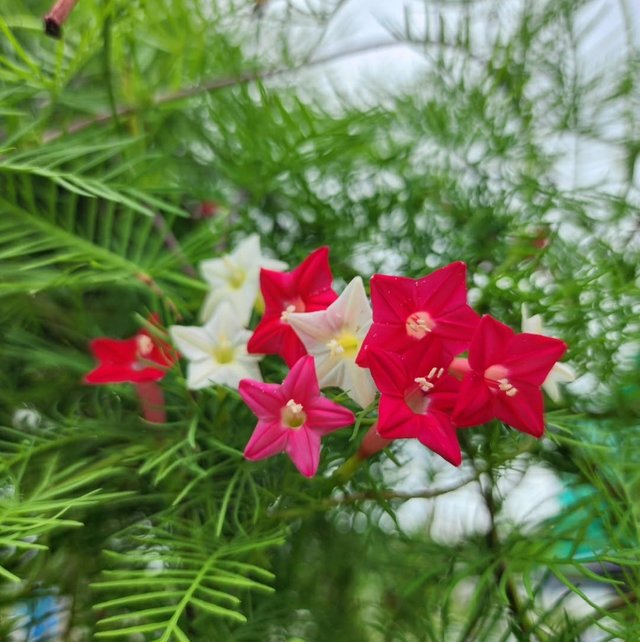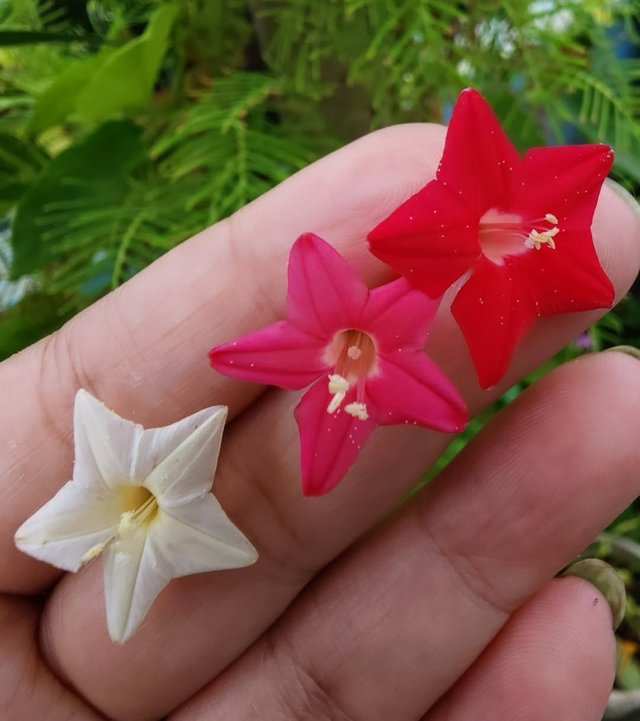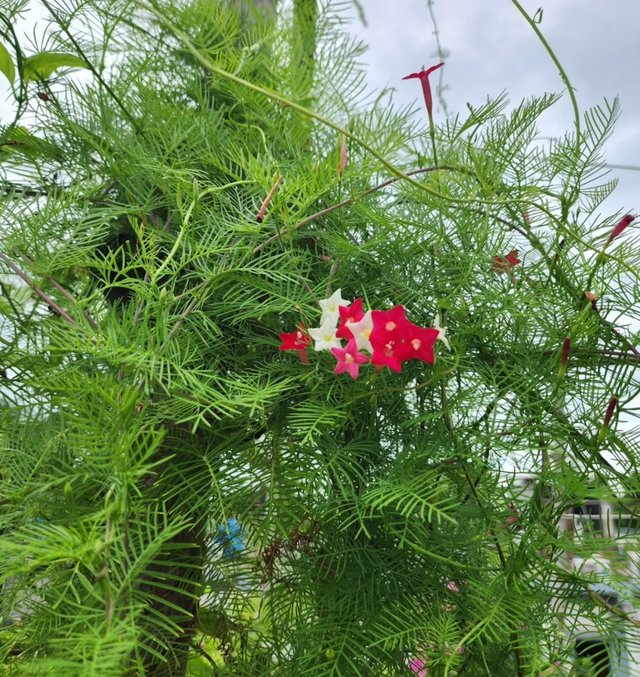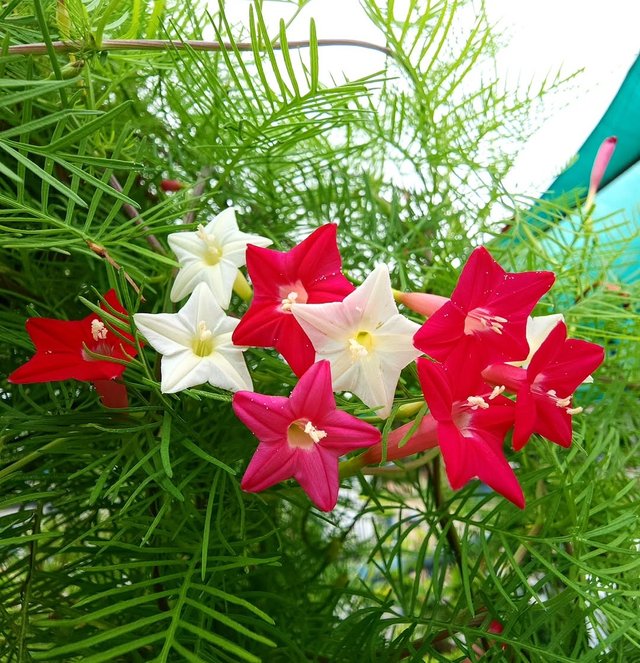Beautiful Colour Cypress Vine Flower
Cypress Vine: The Graceful Climber with Starry Blossoms
The Cypress vine, scientifically known as Ipomoea quamoclit, is one of nature’s most enchanting climbing plants. Belonging to the morning glory family, this annual vine is admired for its finely divided, feathery foliage and a dazzling display of star-shaped flowers. Often grown on trellises, fences, and pergolas, it is beloved by gardeners not only for its beauty but also for its ability to attract hummingbirds, butterflies, and bees.
Appearance and Growth Habit
The Cypress vine grows with a delicate yet vigorous climbing habit, often reaching 6–15 feet in a single growing season under favorable conditions. Its slender stems twist and twine around supports, creating a lush green curtain. The foliage is one of its most distinguishing features — soft, fern-like leaves that are deeply cut into fine thread-like segments, giving the plant an airy, graceful look.
The flowers are small but striking, shaped like five-pointed stars. They come in shades of bright red, rosy pink, or pure white, sometimes all blooming together on the same vine for a vibrant, multi-colored effect. These blooms typically open in the morning and close in the afternoon, following the sun’s rhythm.
Native Range and Distribution
Originally native to tropical regions of Central and South America, the Cypress vine has spread worldwide as an ornamental plant. In warmer climates, it can self-seed and return each year, while in cooler regions it is grown as a seasonal annual.
Growing Conditions
Cypress vine thrives best under the following conditions:
Sunlight: Full sun is ideal for maximum flowering, though it tolerates partial shade.
Soil: Well-draining, moderately fertile soil works best. It can adapt to different soil types but prefers slightly acidic to neutral pH.
Water: Regular watering during dry spells keeps it lush, though it can tolerate short periods of drought once established.
Temperature: Warm climates encourage rapid growth; frost will kill the plant.
Seeds have a hard coat, so soaking them overnight or lightly nicking them before planting improves germination. The plant typically blooms from mid-summer to early fall.




%20(9).jpeg)